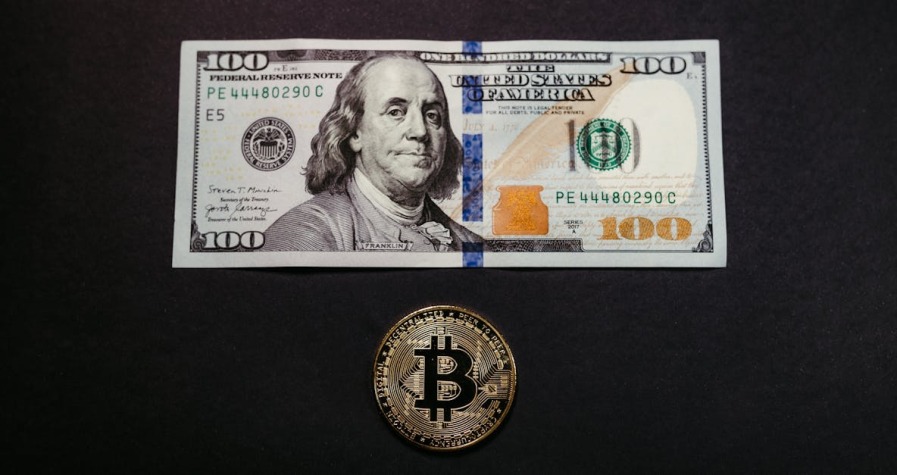Cryptocurrency’s wild price swings often leave you wondering if there’s a more stable way to enter the digital asset world. You’ve probably heard about Bitcoin’s dramatic peaks and valleys or witnessed other cryptocurrencies lose half their value overnight. This volatility makes many potential investors hesitant to dive into crypto markets.
Enter stablecoins – digital currencies designed to maintain steady values by pegging themselves to traditional assets like the US dollar or gold. They promise the benefits of cryptocurrency technology without the heart-stopping price fluctuations that characterise most digital assets. But are they truly the safer alternative they claim to be?
Understanding stablecoins could be your gateway to navigating the crypto space with greater confidence. Whether you’re looking to store value digitally or make seamless international transfers, these supposedly stable digital assets offer intriguing possibilities that deserve your attention.
What Are Stablecoins?
Stablecoins represent digital currencies designed to maintain stable values through various pegging mechanisms. These crypto assets bridge traditional finance and blockchain technology by offering price stability that regular cryptocurrencies lack.
How Stablecoins Work
Stablecoins maintain their value through three primary mechanisms that anchor their price to stable reference assets. Each mechanism offers different approaches to achieving price stability in the volatile cryptocurrency market.
Fiat-collateralised stablecoins back each token with traditional currency reserves held in bank accounts. Companies like Tether (USDT) and USD Coin (USDC) maintain dollar reserves equal to the number of tokens in circulation. You can redeem these tokens for their underlying fiat currency at any time.
Crypto-collateralised stablecoins use cryptocurrency holdings as backing but require over-collateralisation to account for price volatility. DAI operates this system by locking Ethereum and other crypto assets worth 150% of the stablecoin value in smart contracts.
Algorithmic stablecoins rely on automated protocols that adjust token supply based on market demand without physical backing. These systems increase token supply when prices rise above the peg and decrease supply when prices fall below target levels.
Key Characteristics of Stablecoins
Stablecoins exhibit distinct features that differentiate them from both traditional cryptocurrencies and conventional currencies. Understanding these characteristics helps you evaluate different stablecoin options for your specific needs.
| Characteristic | Description | Example |
|---|---|---|
| Price Stability | Maintain values within 1-2% of target price | USDC trades between $0.98-$1.02 |
| Transparency | Regular audits verify reserve backing | Circle publishes monthly USDC reserve reports |
| Liquidity | High trading volumes enable easy conversion | USDT processes $50+ billion daily volume |
| Programmability | Smart contract integration enables automated functions | DAI works with DeFi lending protocols |
Regulatory compliance varies significantly across different stablecoin types and jurisdictions. Fiat-backed stablecoins face stricter oversight due to their traditional banking relationships and reserve requirements.
Transaction speed typically matches the underlying blockchain network performance rather than traditional banking systems. Ethereum-based stablecoins process transactions in 15 seconds compared to 3-5 business days for wire transfers.
Cross-border functionality eliminates geographical restrictions present in traditional payment systems. You can send stablecoins globally without correspondent banking relationships or currency conversion fees that affect international transfers.
Types of Stablecoins
Stablecoins operate through three distinct mechanisms that determine their stability and risk profiles. Each type offers different advantages and trade-offs for your digital currency needs.
Fiat-Collateralised Stablecoins
Fiat-collateralised stablecoins maintain their stability through direct backing by traditional currencies like the US dollar or euro. These stablecoins operate on a 1:1 reserve basis, meaning the issuing entity holds equivalent fiat currency or cash equivalents such as Treasury bills to support each token in circulation.
Popular examples include Tether (USDT) and USD Coin (USDC), which dominate the stablecoin market due to their straightforward backing mechanism. Your confidence in these stablecoins depends on the issuer’s transparency regarding reserves and their trustworthiness in maintaining adequate backing.
Key characteristics of fiat-backed stablecoins:
| Feature | Description |
|---|---|
| Backing Ratio | 1:1 with fiat currency reserves |
| Stability Mechanism | Direct fiat currency or equivalent holdings |
| Risk Profile | Lower volatility, dependent on issuer credibility |
| Transparency | Regular audits of reserve holdings required |
These stablecoins face the strictest regulatory oversight due to their resemblance to traditional financial instruments and their widespread adoption for trading and payments.
Crypto-Collateralised Stablecoins
Crypto-collateralised stablecoins use other cryptocurrencies as backing collateral, typically maintaining an over-collateralised structure to manage the inherent volatility of crypto assets. This over-collateralisation protects the stablecoin’s value when the backing cryptocurrency experiences price fluctuations.
Dai (DAI) represents the most prominent example, backed by Ether and maintained through smart contracts within the MakerDAO protocol. You benefit from decentralised governance and transparency, as these systems operate on public blockchains with visible collateral ratios.
Operational mechanics include:
- Over-collateralisation: Maintaining 150-200% backing ratios to absorb price volatility
- Liquidation mechanisms: Automatic selling of collateral when ratios fall below safe thresholds
- Governance tokens: Community-driven decisions on protocol parameters
- Smart contract automation: Programmatic maintenance of stability without human intervention
The decentralised nature eliminates counterparty risk associated with centralised issuers, though you face exposure to smart contract vulnerabilities and the volatility of backing cryptocurrencies.
Algorithmic Stablecoins
Algorithmic stablecoins maintain price stability through automated protocols that adjust token supply based on market demand rather than backing collateral. These systems use economic incentives and algorithmic mechanisms to expand or contract the money supply, similar to central bank monetary policy.
TerraUSD serves as a notable example of this approach, though algorithmic stablecoins carry higher risk profiles due to their reliance on market confidence and algorithmic effectiveness. Your investment depends entirely on the protocol’s ability to maintain stability through supply adjustments and market maker incentives.
Algorithmic stability mechanisms:
- Elastic supply: Automatic token minting during high demand periods
- Burn mechanisms: Token destruction when prices exceed target ranges
- Seigniorage systems: Profit distribution to stabilise price movements
- Governance protocols: Community-driven parameter adjustments
These stablecoins offer complete decentralisation without collateral requirements, but their stability depends on maintaining user confidence and effective algorithmic execution rather than tangible asset backing.
The Safety Features of Stablecoins
Understanding the specific safety features of stablecoins helps you appreciate why they’re considered the safer alternative in cryptocurrency markets. These digital assets incorporate multiple protective mechanisms that distinguish them from volatile cryptocurrencies.
Price Stability Mechanisms
Price stability mechanisms form the backbone of stablecoin safety through three distinct approaches. Fiat reserves maintain the most straightforward stability by ensuring 1:1 redemption ratios – when you hold USDT or USDC, equivalent fiat currency reserves guarantee your ability to exchange at face value.
Smart contracts for crypto collateral provide decentralised stability through over-collateralisation systems. DAI exemplifies this mechanism by requiring you to lock higher-value crypto assets than the stablecoins you mint, creating a safety buffer against market volatility.
Algorithmic supply adjustments represent the most complex mechanism, automatically expanding or contracting token supply based on price deviations. These systems include:
- Rebase mechanisms that adjust total supply proportionally
- Coupon systems that incentivise users to burn or mint tokens
- Elastic protocols that respond to market demand fluctuations
Reduced Volatility Compared to Traditional Cryptocurrencies
Stablecoins demonstrate significantly lower volatility than Bitcoin and Ethereum, maintaining steady values during financial stress periods. Your stablecoin holdings remain consistent when traditional cryptocurrencies experience dramatic price swings, making them effective safe-haven assets for risk management.
USD-pegged stablecoins offer superior portfolio risk reduction during financial distress compared to commodity-backed alternatives due to the relative stability of the US dollar. This stability translates into practical benefits for your trading and investment strategies, allowing you to preserve value while remaining within the cryptocurrency ecosystem.
The volatility reduction becomes particularly evident during market downturns, where stablecoins maintain their pegged values whilst other cryptocurrencies can lose 20-50% of their value in single trading sessions.
Popular Stablecoins in the Market
The stablecoin market, valued at approximately £255 billion as of June 2025, features several dominant players that you can rely on for consistent value and widespread utility. These established stablecoins offer different approaches to maintaining price stability whilst providing the security and convenience you expect from digital assets.
USDT (Tether)
USDT stands as the most widely used stablecoin in the cryptocurrency ecosystem, launched in 2014 with a direct 1:1 peg to the US dollar. You’ll find USDT accepted across virtually every major cryptocurrency exchange globally, offering unmatched liquidity for your trading and transaction needs.
Key Features of USDT:
- Market dominance with the highest trading volumes amongst all stablecoins
- Universal acceptance across cryptocurrency exchanges and DeFi platforms
- Immediate availability for cross-border payments and crypto trading pairs
- Multi-blockchain support including Ethereum, Tron, and Binance Smart Chain
Despite facing scrutiny over reserve transparency practices, USDT remains your most liquid option for cryptocurrency transactions. The stablecoin’s widespread adoption makes it an essential tool for navigating decentralised finance ecosystems and facilitating quick crypto-to-crypto conversions.
USDC (USD Coin)
USD Coin represents the gold standard for regulatory compliance and transparency in the stablecoin market. Issued jointly by Circle and Coinbase, USDC maintains full backing through US dollar reserves held at regulated financial institutions with monthly audits you can verify.
USDC Advantages:
- Complete regulatory compliance with transparent reserve reporting
- Monthly attestation reports from certified public accounting firms
- Strong institutional adoption and partnership networks
- Native integration with major DeFi protocols and lending platforms
You’ll find USDC particularly valuable if you prioritise transparency and regulatory clarity. Financial institutions and corporations often choose USDC for business applications due to its robust compliance framework and proven track record of maintaining dollar parity during market volatility.
DAI and Other Notable Options
DAI offers a completely different approach as the leading decentralised stablecoin created by MakerDAO. Unlike fiat-backed alternatives, DAI maintains stability through over-collateralised cryptocurrency assets managed by smart contracts and community governance.
DAI’s Unique Properties:
- Decentralised governance through MakerDAO token holders
- Censorship resistance without reliance on traditional banking systems
- Over-collateralisation using Ethereum and other approved crypto assets
- Algorithmic stability mechanisms that adjust to market conditions
Other Notable Stablecoins:
| Stablecoin | Backing Mechanism | Key Advantage |
|---|---|---|
| BUSD | Fiat reserves | Binance ecosystem integration |
| TUSD | Fiat reserves | Enhanced transparency features |
| FRAX | Hybrid algorithmic | Partial collateralisation efficiency |
You’ll find DAI particularly useful in economies with high inflation or capital controls, where traditional stablecoins might face restrictions. The decentralised nature of DAI ensures you maintain access to stable value storage without depending on centralised institutions or traditional banking infrastructure.
Real-World Applications of Stablecoins
Stablecoins transform digital finance through practical applications that address limitations of traditional financial systems. These stable digital assets provide solutions across international payments and decentralised finance platforms.
Cross-Border Payments
Cross-border payments represent stablecoins’ most transformative application in international finance. You can complete international transfers using stablecoins with near-instantaneous settlement on blockchain networks, whilst traditional banking systems typically require 3-5 business days for processing.
Stablecoin payments operate continuously throughout the week, independent of banking hours or time zone restrictions. You’re able to send payments at any time without waiting for banks to open or process transactions during standard business hours.
Transaction costs decrease significantly when you use stablecoins for international transfers. Traditional correspondent banking systems charge multiple fees including currency conversion costs, intermediary bank charges, and processing fees. Stablecoins eliminate these intermediaries and reduce overall transfer costs by removing currency conversion requirements and streamlining the payment process.
Financial inclusion expands particularly in emerging markets where you might face limited access to traditional banking services. Stablecoins provide reliable financial infrastructure without requiring extensive banking relationships or costly account maintenance fees.
Major payment companies demonstrate mainstream adoption through stablecoin integration. PayPal launched PYUSD for faster cross-border transactions, signalling institutional confidence in stablecoin payment solutions and commercial viability.
DeFi and Trading
DeFi protocols utilise stablecoins as essential infrastructure components for lending and borrowing operations. You can provide stablecoins as collateral for loans or stake them in liquidity pools whilst maintaining exposure to predictable asset values rather than volatile cryptocurrency prices.
Trading applications benefit from stablecoins through enhanced risk management capabilities. You can exit volatile cryptocurrency positions by converting to stablecoins without returning to fiat currency systems, maintaining your position within digital asset ecosystems whilst protecting against market downturns.
Stablecoins function as safe haven assets during cryptocurrency market volatility. You’re able to preserve capital value during market stress whilst remaining within decentralised finance platforms and avoiding traditional banking conversion processes.
Hedging strategies incorporate stablecoins for portfolio protection against cryptocurrency price swings. You can balance volatile asset holdings with stable value positions, reducing overall portfolio risk whilst maintaining participation in digital asset markets.
| Application Type | Primary Benefit | Time Advantage | Cost Reduction |
|---|---|---|---|
| Cross-border payments | Instant settlement | 24/7 availability | 70-90% lower fees |
| DeFi lending | Stable collateral | Real-time processing | Minimal intermediary costs |
| Trading | Risk management | Immediate execution | Reduced conversion fees |
| Liquidity provision | Predictable returns | Continuous operation | Lower operational costs |
Risks and Limitations
Stablecoins offer enhanced price stability compared to volatile cryptocurrencies, yet they carry significant risks that you must understand before adoption. These digital assets face challenges ranging from issuer bankruptcy to complex regulatory frameworks that could impact your investments.
Regulatory Concerns
You’ll encounter an evolving regulatory landscape that varies significantly across jurisdictions, creating uncertainty for stablecoin adoption. The GENIUS Act (2025) in the US establishes a comprehensive federal framework requiring stablecoin issuers to obtain regulation from banking or credit union agencies, with state-level licensing for smaller issuers transitioning to federal oversight once issuance exceeds $10 billion.
Regulatory frameworks differ between regions, with the US and EU’s MiCA Regulation creating potential fragmentation that affects your cross-border stablecoin usage. You must comply with Know Your Customer (KYC), anti-money laundering (AML), and counter-terrorism financing standards, increasing operational complexity for stablecoin businesses you interact with.
Regulators focus on preventing moral hazard and managing systemic risks whilst balancing innovation with financial stability. These regulatory differences mean your stablecoin experience varies depending on your jurisdiction, affecting everything from available services to compliance requirements.
Counterparty Risk
You face counterparty risk because stablecoins remain privately issued digital money, unlike Central Bank Digital Currencies (CBDCs). This exposure means you bear the risk of issuer bankruptcy since stablecoin holders lack the same protections as traditional bank depositors.
Your counterparty risk centres on the stability and solvency of the stablecoin issuer, as issuers may default on redemption obligations. Asset-backed stablecoins expose you to risks where backing assets prove insufficient, illiquid, or compromised during market stress.
You encounter additional operational risks from unregulated issuers, potential fraud, cyber-attacks, and unclear legal protections for lost or stolen assets. Large-scale stablecoin runs could disrupt funding markets and affect banks holding related deposits or collateral, creating systemic risks that impact your broader financial ecosystem.
Algorithmic stablecoins present heightened counterparty risks since they lack guaranteed redemption at par value during rapid withdrawals, with unbacked mechanisms susceptible to complete collapse during market volatility.
Are Stablecoins Truly Safe?
Stablecoins aren’t inherently risk-free despite their stability-focused design and mechanisms. The £255 billion market carries substantial risks that you must understand before considering them as a “safer” crypto alternative.
Reserve Management Risks
Reserve backing represents the most critical safety factor for stablecoins. Fiat-collateralised stablecoins face risks when issuers maintain insufficient reserves or mismanage backing assets. USDT has faced scrutiny regarding reserve transparency whilst USDC provides regular attestations of its 1:1 dollar backing. You’re exposed to potential losses if reserve mismanagement occurs, leading to inability to maintain the currency peg.
Crypto-collateralised stablecoins like DAI carry different reserve risks through over-collateralisation requirements. Market volatility can trigger liquidation events when collateral values drop significantly, potentially affecting your holdings during extreme market conditions.
Systemic Financial Risks
Large stablecoin failures create potential contagion effects across the broader financial system. The substantial market size means that major stablecoin collapse could trigger widespread market disruption, affecting traditional financial markets and cryptocurrency ecosystems simultaneously.
Algorithmic stablecoins present heightened systemic risks through their dependency on market confidence and automated protocols. TerraUSD’s collapse in 2022 demonstrated how quickly algorithmic mechanisms can fail during market stress, resulting in complete loss of peg stability.
Regulatory Uncertainty
Regulatory frameworks for stablecoins remain evolving and inconsistent across jurisdictions. The GENIUS Act (2025) in the US introduces new compliance requirements, but regulatory approaches vary significantly between countries. You face uncertainty regarding future regulatory changes that could impact stablecoin availability, functionality, or legal status.
Compliance costs and operational restrictions may increase as regulations develop, potentially affecting stablecoin utility and your access to specific tokens based on your location.
Operational and Technical Risks
| Risk Category | Impact Level | Examples |
|---|---|---|
| Cyber Attacks | High | Exchange hacks, smart contract exploits |
| Fraud | Medium | Misrepresentation of reserves, operational fraud |
| Technical Failures | Medium | Smart contract bugs, oracle failures |
| Counterparty Risk | High | Issuer bankruptcy, operational cessation |
Stablecoins operate through complex technical infrastructure that introduces operational vulnerabilities. Smart contract bugs can affect crypto-collateralised and algorithmic stablecoins, whilst centralised issuers face traditional operational risks including fraud and mismanagement.
Market Confidence Dependencies
Stablecoin safety relies heavily on market confidence and user trust. Loss of confidence can trigger mass redemptions, testing reserve adequacy and potentially breaking currency pegs. You’re exposed to market psychology effects that can rapidly destabilise even well-collateralised stablecoins during crisis periods.
Transparency and governance quality directly impact market confidence. Stablecoins with poor transparency or questionable governance face higher risks of confidence loss, affecting your holdings’ stability and redemption capabilities.
Conclusion
Stablecoins represent a compelling bridge between traditional finance and the digital asset revolution. They offer you the technological advantages of cryptocurrency whilst mitigating the extreme price volatility that often deters mainstream adoption.
Your choice between fiat-backed USDC or decentralised DAI depends on your specific needs and risk tolerance. Whether you’re seeking efficient cross-border payments or exploring DeFi opportunities stablecoins provide practical solutions for real-world financial challenges.
However you shouldn’t view stablecoins as entirely risk-free investments. Regulatory uncertainty counterparty risks and operational vulnerabilities remain genuine concerns that require careful consideration.
The £255 billion stablecoin market continues evolving rapidly. By understanding their mechanisms benefits and limitations you’re better positioned to leverage these innovative financial instruments whilst managing potential downsides effectively.
Frequently Asked Questions
What are stablecoins and how do they differ from regular cryptocurrencies?
Stablecoins are digital currencies designed to maintain stable values by pegging to traditional assets like the US dollar or gold. Unlike volatile cryptocurrencies that experience dramatic price fluctuations, stablecoins use various mechanisms to preserve consistent pricing. They bridge traditional finance and blockchain technology, offering the benefits of digital assets without the associated risks of price instability, making them ideal for storing value and facilitating transactions.
How do fiat-collateralised stablecoins work?
Fiat-collateralised stablecoins are backed by traditional currency reserves on a 1:1 basis. Popular examples include Tether (USDT) and USD Coin (USDC). These stablecoins maintain stability by holding equivalent amounts of fiat currency in reserve, ensuring direct redemption at face value. They face strict regulatory oversight and require regular audits to verify reserve holdings, making them highly transparent and trustworthy for users.
What makes crypto-collateralised stablecoins different?
Crypto-collateralised stablecoins, like Dai (DAI), use other cryptocurrencies as backing rather than fiat currency. They typically maintain over-collateralisation to manage volatility risks, meaning they hold more cryptocurrency value than the stablecoins issued. These operate through decentralised governance systems and smart contracts, offering greater decentralisation but requiring complex mechanisms to maintain price stability during market fluctuations.
Are algorithmic stablecoins safe to use?
Algorithmic stablecoins carry higher risk profiles as they maintain stability through automated protocols without traditional collateral backing. Examples like TerraUSD adjust token supply based on market demand and rely heavily on market confidence. Whilst they offer innovative decentralised stability mechanisms, they’ve proven vulnerable during extreme market conditions and require careful consideration due to their experimental nature and potential for failure.
What are the main benefits of using stablecoins?
Stablecoins offer price stability, high liquidity for easy conversion, and programmability via smart contracts. They enable near-instantaneous international transfers with significantly reduced costs compared to traditional banking systems. Stablecoins provide transparency through regular audits, facilitate DeFi participation, and serve as effective safe-haven assets during market volatility. They’re particularly valuable for cross-border payments and maintaining crypto exposure without price risk.
How large is the current stablecoin market?
The stablecoin market is valued at approximately £255 billion as of June 2025. Major players include USDT (Tether) with market dominance and high liquidity, USDC known for regulatory compliance and transparency, and DAI offering decentralised governance. Other notable stablecoins include BUSD, TUSD, and FRAX. This substantial market size demonstrates growing adoption and mainstream acceptance of stablecoins across various financial applications.
What risks should I consider before using stablecoins?
Stablecoins carry risks including issuer bankruptcy, regulatory uncertainty, and counterparty risks. Unlike traditional bank deposits, stablecoin holders lack the same protective guarantees. Operational risks include cyber-attacks and smart contract failures. Reserve management issues can affect stability, particularly during market stress. The evolving regulatory landscape may impact availability and functionality. Market confidence plays a crucial role in maintaining stability, especially for algorithmic varieties.
How are stablecoins being used in real-world applications?
Stablecoins are transforming cross-border payments by enabling near-instantaneous international transfers with reduced costs. Major payment companies like PayPal are integrating stablecoins for mainstream adoption. In DeFi, they serve as essential components for lending, borrowing, and risk management. Stablecoins enhance financial inclusion in emerging markets and provide reliable financial infrastructure without extensive banking relationships, making them valuable for global commerce.









